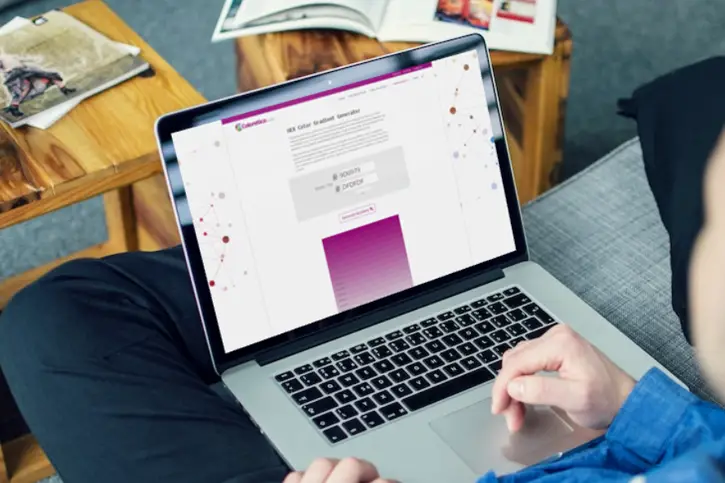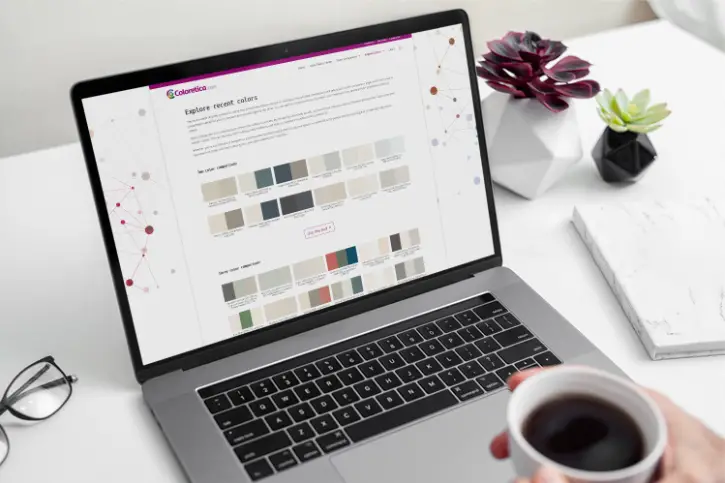Coloretica is all about colors
Color match and color compare tools.
Working with colors can be challenging but also fun and inspiring, we are here to provide guidance, but most importantly, encourage your creativity!
The team at Coloretica is on track to create, maintain and deliver a wide range of free online tools for your success. Using the right tools is undeniably a key component of success and business’ growth.
As you look around at your home or office, it’s easy to notice how many things have vibrant colors. The walls, the furniture, the carpet, even the ceiling — they all seem so happy and colorful.
This might make you think that people are just attracted to bright colors because they’re happy or cheerful. But, what if the opposite was true? What if those bright and vivid shades actually made us feel more calm and relaxed?
It turns out that there is scientific research supporting this theory. A study published in the Journal of Consumer Research found that when people were exposed to colors, they experienced better moods. It was the same for men and women.
HEX Color Generator
Use our HEX Color generator to generate any possible hex color. Easily visualize the components of each color mixture in a clear and comprehensive manner.
HEX Color Gradient Generator
Explore a selection of fresh colors from our vast color galleries. Whether you wish to save, review, or contribute your own preferred shades, this tool allows you to effortlessly maintain a personalized gradient of HEX Colors.
HEX Color Details
Explore comprehensive information about any HEX color you have in mind or can think of.
RGB 0 - 1 Color Picker
Easy picker to sample any RGB color in decimal (0-1) number format for Red, Green and Blue values.
Explore Recent Colors
Discover a collection of recently compared colors from our paint color galleries. Save, review, or add your own preferred colors to the list for easy access and reference.
Convert RGB 255 to 100
Convert RGB 255 scale to 100 using this free online tool intended just for this purpose.
Looking for specific color?
And why is this happening? Well, colors can affect our emotions through two main mechanisms. First, our brains associate certain colors with specific emotions. For instance, pink is often thought to evoke feelings of love and happiness. This association is due to the way our brain processes images. When we see something pink, our mind fills in the blanks with those positive associations.
Second, colors can act as visual cues in our environment. The psychologist Daniel Kahneman explains that colors can help us distinguish one object from another. For example, if I am sitting on a chair and I’m facing a wall, I will have a harder time distinguishing the wall from my chair if the wall is painted white than if it has been painted red.
To put it simply, the intensity of a color can be used to highlight objects in a space. As such, the use of color can help create harmonious environments. And if you want to create a calming atmosphere, consider working with color.
We are truly surrounded by colors
We know that the world looks different depending on whether you’re inside or outside. If you were to stand in front of a window, you would probably experience a very different view than if you stood in front of a brick wall. And even though the brick wall may not change much, we still perceive it differently. Our eyes adjust to different levels of brightness.
The same goes for colors. Our eyes adapt to the light around us. So, if you stand in front of a brightly-lit window, everything will appear brighter than if you were standing in front of a dark corner.
When it comes to interior design, you need to pay close attention to the lighting conditions in your space. You may want to add an accent lamp or a pendant above your sofa to bring some light into a room. Or, perhaps you want to create a dramatic effect by making the windows darker.
If you want to achieve a particular look, don’t forget about the color temperature of the lights. Low-color temperature bulbs like incandescents emit less blue light, which increases the feeling of warmth. And if you have dimmer switches, try switching to warmer settings instead of colder ones.
Read More
Colors affect our emotions
While we usually think of emotions as being internal experiences, there’s evidence that indicates that color can influence our emotions. A team of researchers from the University of California conducted several studies that show how colors can impact our moods. One experiment involved having participants watch short videos before taking surveys on their emotional state.
They found that people who watched videos that were colored green felt happier than people who saw videos that were colored gray. Another experiment showed that people who read text printed in black had higher levels of anxiety than people reading text that was printed in white.
So, the next time you’re designing a space, think about the colors that could influence your clients’ emotions. A vibrant yellow wallpaper might make a person feel lively and energetic. But, a neutral tan wallpaper might calm down a space and make it more relaxing.
When choosing paint colors, you can take advantage of the color wheel to guide your selection. The color wheel uses hues (the name for individual colors) to represent different tones of a spectrum. Each hue is represented by a number called its “hue angle.”
For example, yellow is represented by HEX code #FFB400, while orange is represented by HEX code #DF5A00. To find the best combination of colors, all you need to do is choose a base tone (like white, cream, or brown), then pick three complementary colors.
Then, you simply combine the three colors to get a single color that falls within your desired range. For instance, if you wanted to achieve a cool, subdued vibe, you would use a base tone of white, a shade of green, and a shade of gray.
Color matching is a science
When looking for the perfect paint colors for your space, you need to match the tones as closely as possible. In fact, there are many ways to accomplish this goal.
One way is to work with a color consultant. A color consultant is someone who can analyze your existing paint to find the right shades. A color consultant will usually start with a limited palette of colors. Then, he or she will mix different combinations of paint until they come up with the right color scheme.
Another option is to hire a professional painter who specializes in creating custom paint colors. These painters have access to hundreds of thousands of paints available in the market today. They can mix these paints together to meet your needs.
Regardless of which method you choose, it is important to remember that each paint manufacturer has its own palette. That means that when you mix colors for your space, you need to keep in mind the color ranges of the brands you are shopping for.
You might also want to ask your painter to consult with you on the use of special pigments. Pigments are dyes that can give your paint a unique depth and texture.
For instance, metallic paints contain aluminum powder to produce a shiny finish. Some paint manufacturers offer matte finishes as well, which create flat, non-glossy surfaces.
Paint manufacturers tend to use similar color ranges and pigments, so you don’t always have to worry about mixing multiple brands. For instance, Benjamin Moore offers both metallic paints and matte paints.
There are different color spaces, we provide tools to convert between them
The most common color space in the United States is the Standard RGB (Srgb). It represents the full range of colors that can be produced by a computer monitor.
Color spaces like HSV and HSL are also commonly used in Photoshop. Both of these color spaces allow you to control the saturation, value, and hue. However, they differ slightly in how they represent colors. For instance, the Hue V Saturation (HSV) color model divides colors into three categories: Hue, Value, and Saturation.
Hue refers to the direction of the color wheel where you land. For instance, yellow is represented by HEX code #FFB400 and purple is represented by HEX code #9DFFF0. Hue describes the general appearance of the color.
Value refers to the color intensity, with 0 indicating no color at all and 100 indicating maximum color intensity. Finally, Saturation refers to the purity or dullness of the color.
On the other hand, the Hue Lightness Value (HLV) color model divides colors into four categories: Hue, Lightness, Value, and Saturation. Hue represents the same properties as Hue Saturation V Value.
Lightness refers to the amount of lightness and darkness in a color. Value refers to the amount of lightness or darkness in a color. Lastly, Saturation refers to the degree of pureness or dullness in a color.
Because of the differences between these color models, it is essential to understand which one you should use when you’re painting a room.
There are quite a few resources on our website that can help you determine which color space, paint brand or color palette you should use.











